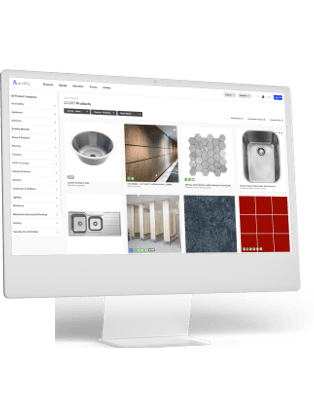-
Australia
Home
/
Products
/
Flooring
/
Carpets & Rugs
/
Carpets & rugs
Products in All Categories
132 Carpets & Rugs
What to Consider When Buying Carpets and Rugs
Carpeting is a popular and flexible option. It is weaved from a range of materials and has more colours and textures than any other. Look for the fibre density count to gauge the carpet's quality. The product will be more robust if it has more fibres per square inch.
Types of Carpet Fibre
There are different kinds of carpet fibre: wool, acrylic, nylon, polypropylene and polyester. When selecting the best carpet material, keep in mind the function of each space and how you intend to utilise it.
Wool: Wool is a naturally moisture-resistant substance that is strong and stain resistant; it is regarded as the gold standard for carpet quality. It is the most common option for carpet flooring, feels pleasant against hands and feet and also comes in the form of carpet tiles.
Nylon: Nylon is another alternative that holds up well against deterioration; it is a synthetic material with a solid reputation. Make sure the product you purchase has been treated; nylon is known for generating static electricity.
Acrylic: A second synthetic choice that closely resembles wool's characteristics is acrylic. It naturally repels insects and holds up well to wear and mildew.
Polyester: If you want carpeting in vivid, dramatic colours, polyester is a popular material. Although it is moisture resistant, stains can be challenging to remove.
Polypropylene: A polypropylene carpet can be the best option if you're seeking something durable for both indoor and outdoor use. It works best in an outdoor setting if you install it without a carpet pad as it is the most resistant to stains, moisture and mildew.
Carpet Terminology
The following carpet terminology is also crucial to comprehend when you search for the ideal carpet:
Fibre: The substance that makes up the carpets. Two, three, or four-ply yarn made from single fibres is spun together before being sewn to a woven background.
Pile: Also known as face or nap, pile describes the height of the fibre.
Density: The density of a material refers to how closely the fibre strands are packed. The strength of the carpet increases with density.
Face Weight: The amount of fibre on the carpet's face is referred to as face weight. In general, a carpet with a higher face weight is longer lasting.
Texture: Texture is determined by how fibres are cut, twisted or looped. This affects the carpet's appearance and texture as well as its durability.
Twist: Twist is the number of times a fibre turns in a one-inch length. Higher twist counts are usually more robust and can better withstand foot traffic.
PAR Rating: On a scale of 1 to 5, the higher the number, the more durable the carpet is.
Carpeting's primary benefits are that it's comfortable and warm beneath your feet, it muffles sound and offers cushioning in the event of falling. It's also reasonably priced. However, carpets are prone to dust, mites and other allergens. It's also possible that you'd be more comfortable with an area rug rather than wall-to-wall flooring.
What to Consider When Buying a Rug
Rugs are a popular flooring option because they are available in a wider selection of styles and colours; they can be moved between rooms and are surprisingly cost-effective. It's also much easier to make your room stand out with a vibrant or fun rug than with carpeting. You can even take your rug with you when you move house.
It's about determining the space the rug will be placed in and what purpose it's designed to serve. Do you want it to be an art piece to bring together the style, or is it there to prevent slips in areas with high traffic?
Consider the following when buying a rug:
1. Size and Shape
When you are deciding on the right rug for your space, selecting one that is the right size is crucial. As a guideline, you should choose an area rug that is able to accommodate and complement the most important components of the room.
2. Materials and Style
There are an endless number of terms used to describe the appearance of a rug. However, most of the time, the fabric a rug is made of is the primary factor that determines the design of a piece.
Here are the most commonly used rug materials:
• Wool: Wool is the most popular rug fibre, and is also one of the strongest. It's an excellent choice for an area with high traffic, such as a living room or dining room, since it's durable and extremely soft and comfy. Wool rugs are naturally impervious to dirt and water and, since wool has an elastic quality, it bounces back to its original form quickly.
• Natural Fibre: Natural fibre rugs have an organic look and feel. They are an excellent way to give warmth and texture to the space. Typically, they're not expensive, and they can be layered to create a striking visual effect: for example, place a jute rug beneath a wool or cotton rug, leaving an inch of the jute rug exposed to act as a border for your colourful rug on top.
• Hair-on-Hide: The rugs made of hair-on-hide are either full-sized animal hides, which have an organic, irregular form, or area rugs composed of cut pieces of hide joined to form geometric patterns. These rugs are soft with a short-pile texture that gives a rustic, modern look to the room.
• Cotton: Rugs made of cotton are soft and comfortable, and they are also cost-effective. It is a great option for spaces in which you’re likely to replace your rug quite often due to the volume of use, such as an entryway or kitchen area. The majority of cotton rugs are machine-washable, yet they are also subject to fading over time when placed in direct sunlight.
• Synthetic Fibre: Synthetic rugs like microfibre rugs are constructed from polyester or an amalgamation of nylon, polyester, and other fibres. This is a budget-friendly rug choice: they are designed to look and feel like an expensive wool or cotton rug, but are sold at only a fraction of the price.
• Silk: Much like silk in the clothing industry, silk rugs are considered luxurious items. Silk rugs have a delicate low-pile and are often thought to be extravagant ornaments: wetting a silk rug can cause irreparable damage, so they are traditionally used to decorate walls instead of floors.
3. Pile
Pile refers to the density, or the thickness of a rug. "Rugs that are coarser will always have more pile to them than fine and intricately designed pieces," states expert in antique rugs, Omri Schwartz from Nazmiyal Rugs.
Rug pile is generally classified into two types:
• Low-pile: These rugs have shorter loops and fibres (think flatweaves) and are ideal for areas with high traffic, such as the kitchen.
• High-pile: These rugs have taller and less tangled fibres (think shags and Moroccan rugs). They are more luxurious and are perfect for living rooms or bedrooms.
4. Care and Cleaning
It's highly likely that, at some point, your rug will be stained. You'll need to consider care and maintenance prior to making a purchase. Modern and budget rugs may not possess the same structural integrity as older, more expensive pieces.
5. Getting a Rug Pad
When you've finally secured your ideal piece, you need to make sure your rug will stand the test of time. This means purchasing rug pads. It is not just a matter of stopping the rug from bunching up and tripping you up, but it also provides an extra layer of cushioning to prevent heavy furniture from damaging the floor.
Archify is an architecture and design platform for product sourcing and specification . We are proud to have a large selection carpets and rugs from trusted carpet suppliers, brands and manufacturers.
Flooring Categories
<ul style="font-family: " open="" sans",="" "helvetica="" neue",="" helvetica,="" arial,="" sans-serif;="" font-size:="" 13px;"="">
<ul style="font-family: " open="" sans",="" "helvetica="" neue",="" helvetica,="" arial,="" sans-serif;="" font-size:="" 13px;"="">
<ul style="font-family: " open="" sans",="" "helvetica="" neue",="" helvetica,="" arial,="" sans-serif;="" font-size:="" 13px;"="">
<ul style="font-family: " open="" sans",="" "helvetica="" neue",="" helvetica,="" arial,="" sans-serif;="" font-size:="" 13px;"="">
<ul style="font-family: " open="" sans",="" "helvetica="" neue",="" helvetica,="" arial,="" sans-serif;="" font-size:="" 13px;"="">
<ul style="font-family: " open="" sans",="" "helvetica="" neue",="" helvetica,="" arial,="" sans-serif;="" font-size:="" 13px;"="">
<ul style="font-family: " open="" sans",="" "helvetica="" neue",="" helvetica,="" arial,="" sans-serif;="" font-size:="" 13px;"="">








